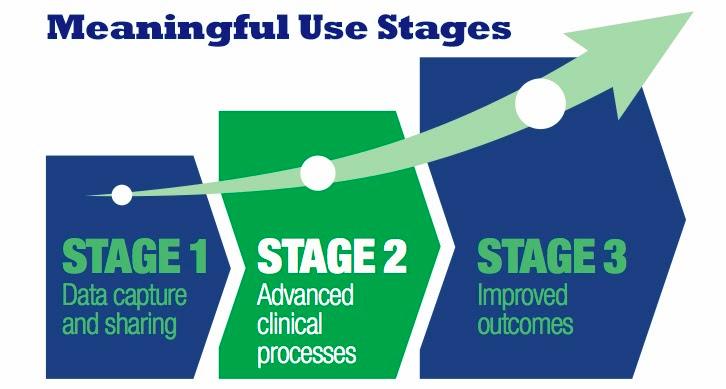The Consolidated and Further Continuing Appropriations Act, 2015 was signed by the President on December 1, 2014. It reads in part:
Interoperability.--The agreement directs the Health IT Policy Committee to submit a report to the House and Senate Committees on Appropriations and the appropriate authorizing committees no later than 12 months after enactment of this act regarding the challenges and barriers to interoperability. The report should cover the technical, operational and financial barriers to interoperability, the role of certification in advancing or hindering interoperability across various providers, as well as any other barriers identified by the Policy Committee.
Past Health IT Policy Committee recommendations in the following categories of barriers to interoperability:
- Lack of universal adoption of standards-based EHR systems
- Impact on providers’ day-to-day workflow
- Complex privacy and security challenges associated with widespread health information exchange
- Need for synchronous collective action among multiple stakeholders
- Weak or misaligned incentives
Interoperability is defined as the ability of two or more systems to exchange information and the ability of those systems to use the information that has been exchanged without special effort. Although substantial interoperability amongst all stakeholders in American health care has not been achieved to date, there are pockets of meaningful health information exchange developing.
The following new recommendations were developed by the Interoperability Task Force of the HITPC to build upon work that ONC has undertaken to identify solutions to some of the barriers identified within this report, most notably, ONC’s updated version of the Shared Nationwide Interoperability Roadmap (Interoperability Roadmap).
Three Recommendations
Develop and implement meaningful measures of HIE-sensitive health outcomes and resource use for public reporting and payment
HIE-sensitive measures are those which require health information to be exchanged and effectively used in order for the applicant to earn high scores. In order to enhance the strength of incentives that drive interoperability, a set of specific measures should be developed that focus on the delivery of coordinated care, facilitated by shared information across the entire health team (including the individuals and families) and throughout the continuum of care settings. An example of an HIE-sensitive measure would look at medically unnecessary duplicate testing. Payers could provide incentive clout by declining to reimburse for medically unnecessary duplicate testing.
Develop and implement HIE-sensitive vendor performance measures for certification and public reporting
While use of HIE-sensitive quality and value measures for provider organizations may serve as an indirect incentive for vendors to improve their systems, we believe that direct measures of HIE-sensitive vendor performance will bolster market forces behind vendor business practices that promote interoperability. Today, purchasers of EHR systems lack such measures to inform purchasing decisions or to use as a lever to put pressure on vendors to improve. Although vendors have strong incentives to pass the interoperability requirements for EHR certification, this process is “one-time” and occurs in a lab. It has not been shown to translate into interoperability that is affordable or easy to implement in the field.
Accelerate Payment Incentives for Interoperability: Set specific HIE-sensitive payment incentives that incorporate specific performance measure criteria and a timeline for implementation that establishes clear objectives of what must be accomplished under alternative payment models
 Payers have existing mechanisms through which to incentivize providers to meet HIE-sensitive outcome measures, and Medicare is the logical payer to lead such efforts (particularly as CMS operationalizes new payment requirements under the Medicare Access and CHIP Reauthorization Act of 2015 (MACRA). We note that these measures do not require defining interoperability as a new domain of performance incentives as they could easily be incorporated into incentive programs that target dimensions of provider performance that are HIE-sensitive, such as care that is coordinated, high-value, and safe, as well as integrated across the health and social services continuum. For example, a payment policy that denies claims for medically unnecessary duplicate testing for high-cost imaging would require coordination, or at least awareness, of orders and results by all providers involved in the care of an individual patient. Providing a roadmap for specific HIE-sensitive performance measures for future payment incentives, with enough lead time, will motivate and catalyze specific actions to speed the pace of achieving effective health information exchange that facilitates high priority use cases.
Payers have existing mechanisms through which to incentivize providers to meet HIE-sensitive outcome measures, and Medicare is the logical payer to lead such efforts (particularly as CMS operationalizes new payment requirements under the Medicare Access and CHIP Reauthorization Act of 2015 (MACRA). We note that these measures do not require defining interoperability as a new domain of performance incentives as they could easily be incorporated into incentive programs that target dimensions of provider performance that are HIE-sensitive, such as care that is coordinated, high-value, and safe, as well as integrated across the health and social services continuum. For example, a payment policy that denies claims for medically unnecessary duplicate testing for high-cost imaging would require coordination, or at least awareness, of orders and results by all providers involved in the care of an individual patient. Providing a roadmap for specific HIE-sensitive performance measures for future payment incentives, with enough lead time, will motivate and catalyze specific actions to speed the pace of achieving effective health information exchange that facilitates high priority use cases.









